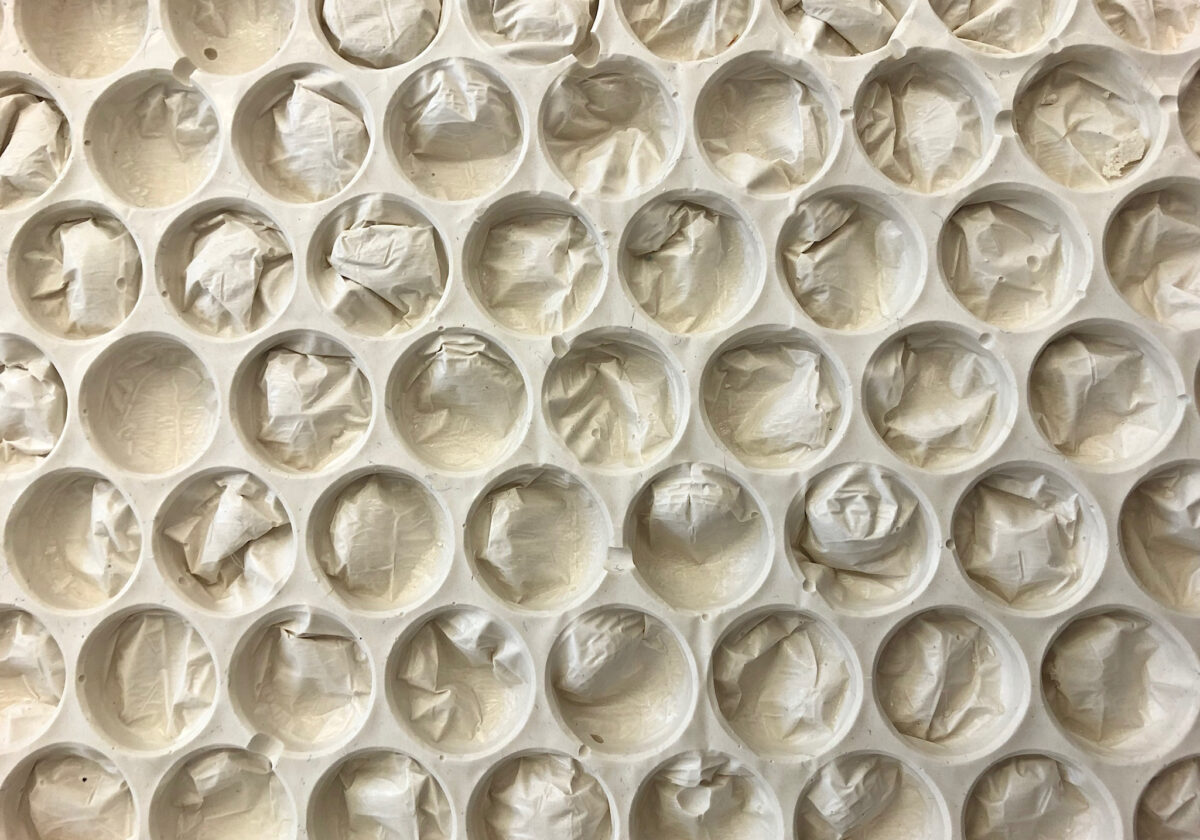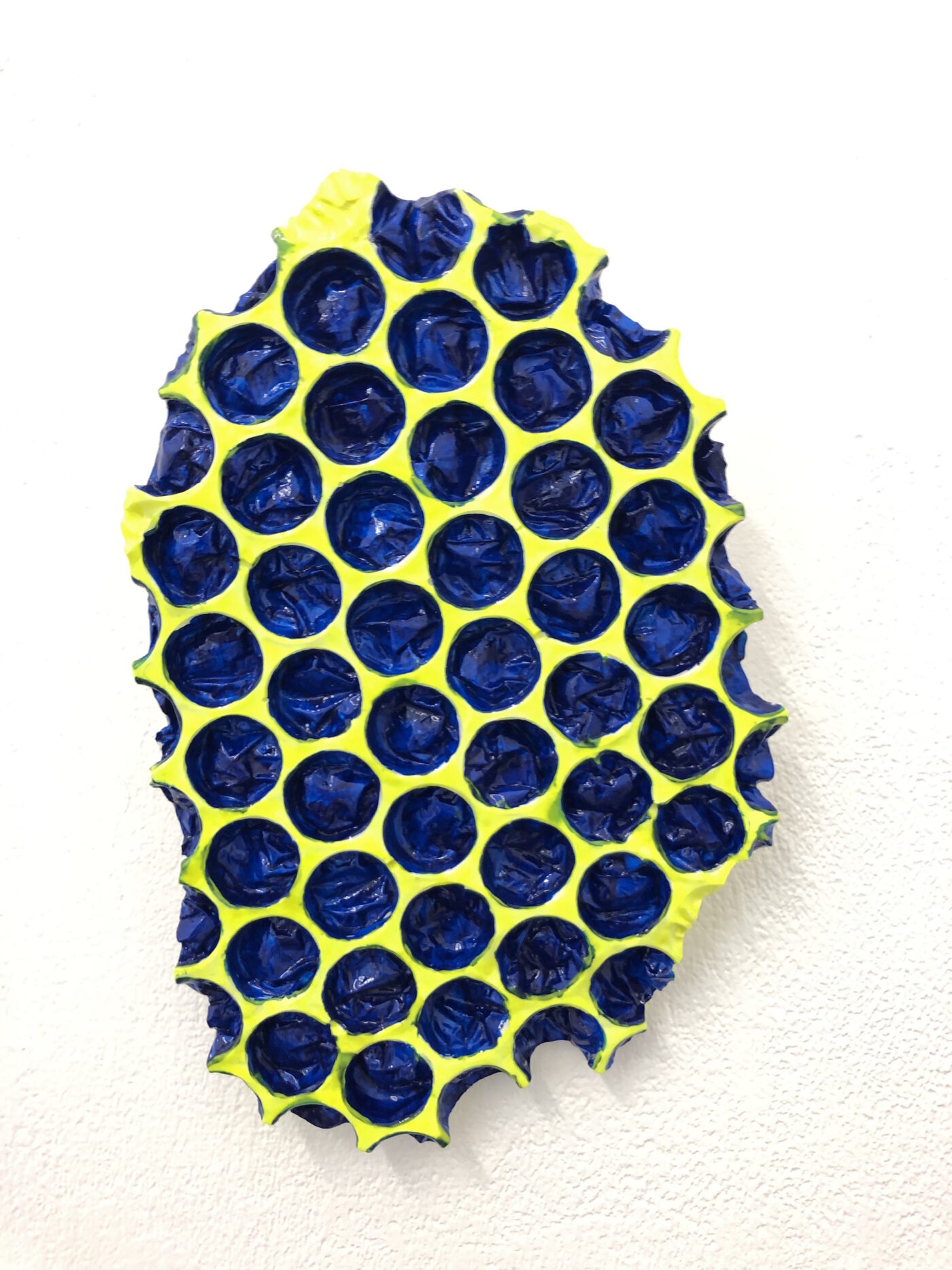
'Untitled' Plaster cast with acrylic and varnish
I began the project with the intention of portraying the concept of invisible illness in a visible way. Invisible illnesses are disabilities that are not immediately apparent. I started off thinking of figurative ways to show this, but soon found that working in an abstract way was much more suitable to the subject matter.
Working with plaster I explored the idea of how negative space could portray the idea of something missing. I began creating plaster blocks, focusing on the organic shape left empty in the middle. I experimented with pops of colour and used a bright colour on the inside rim of the sculpture to reveal and create focus on the inner edge that would usually be invisible to the viewer’s eye. After this I continued to develop the concept of negative space and started to use more circular shapes. I started thinking about different materials that I could use to reflect the word ‘invisible’. I experimented with using resin, plastic, and glass wax to fill and cover shapes in my sculptures. I learnt how to handle these new materials, incorporating them into my plaster casts, and explored their various opacities and transparencies.
I wanted to explore the idea of invisibility by creating a repeated pattern of something and then changing one element slightly. I began casting large bubble wrap as this gave me the repetition that I had envisioned, as well as an interesting texture. I used acrylic paint and varnish on these plaster casts. One artist that influenced my exploration of bright colours is Howard Hodgkin, who commits to bold colour choices and often has a repeated painterly motif.

'The same but different I' Acrylic on paper.

'Normal' Collage experiment using watercolour on primed paper.
Since having to vacate the studio, I have been unable to work with plaster. However I continued my exploration of colour and shape through alternative media. I began painting my circles on a larger scale using layering to create more texture, however I soon felt that my work had become a bit flat and two-dimensional. I began to problem-solve, thinking of new strategies to make my work more 3-D in the absence of the plaster. I started off by using found objects such as toilet roll and pill packets in order to create a more raised surface. I also started experimenting by painting in gesso and layering to create some of the qualities that I was missing from the plaster. At this point I had been working with a regular circle motif for some time, but I started to distort the circles to make them more interesting. This eventually led me to working with rubber bands as they naturally fall into organic shapes. As I experimented with using them, I came to the realisation that they represented my original idea of hidden illnesses very effectively: they are technically identical, but can be distorted into random shapes.
I started experimenting with the way the rubber bands interacted together and created cut-outs using different materials. I explored their negative space by spraying the bands and revealing a clean outline of the shapes underneath. I also began to think about size and created my own large sculptural bands using found materials such as shopping bag handles. I then reflected on what aspects of my experiments had worked well, and began to start my final piece. I worked on my three pieces simultaneously, trying to explore different elements in each, whilst maintaining a common thread.

'The same but different III' Acrylic and gesso on paper.
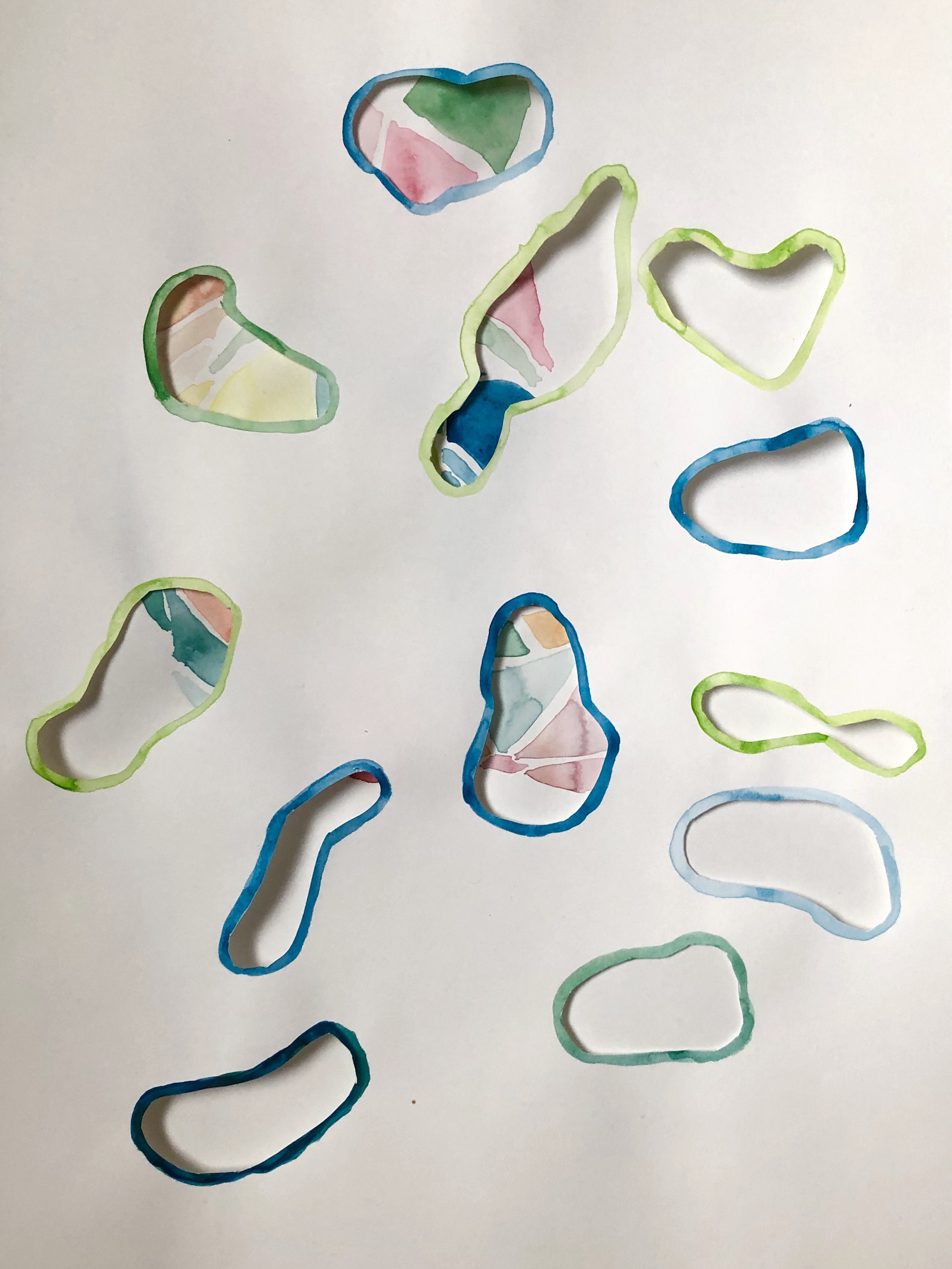
'The same but different ll' Paper cut-out using watercolour.
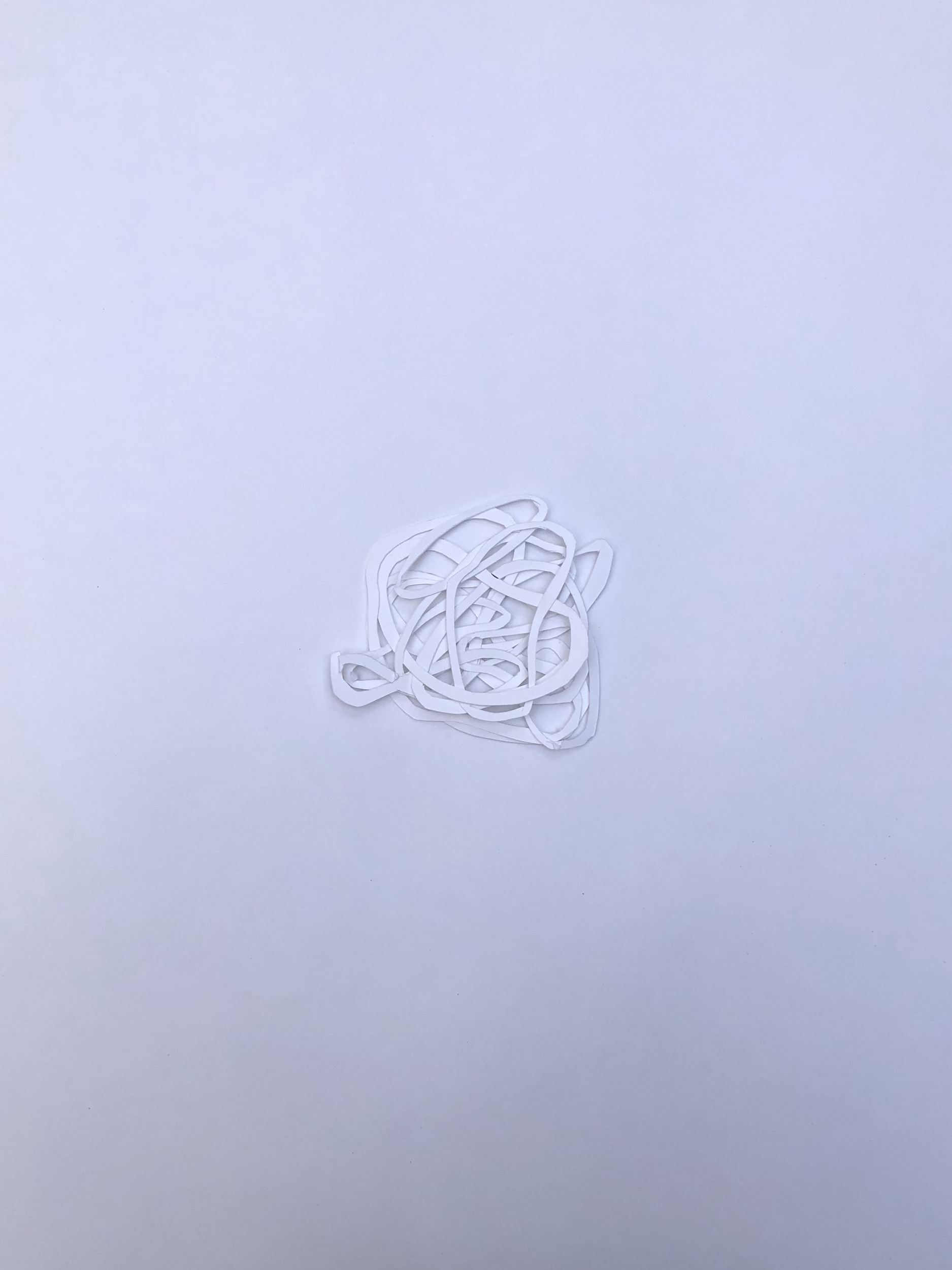
'Invisible bands I' Paper collage
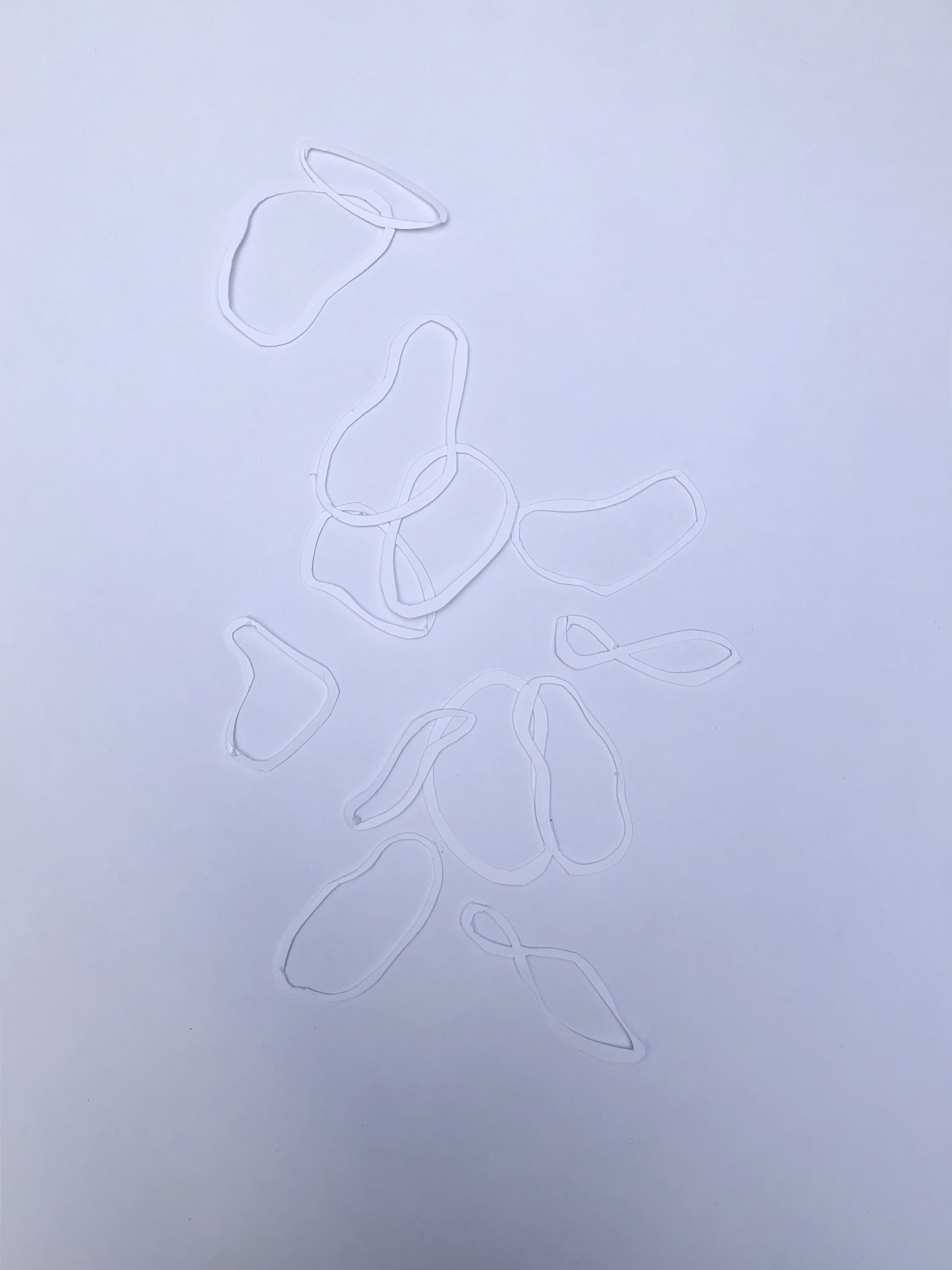
'Invisible bands II' Paper collage
Links

'Untitled' Plaster cast with acrylic and varnish
I began the project with the intention of portraying the concept of invisible illness in a visible way. Invisible illnesses are disabilities that are not immediately apparent. I started off thinking of figurative ways to show this, but soon found that working in an abstract way was much more suitable to the subject matter.
Working with plaster I explored the idea of how negative space could portray the idea of something missing. I began creating plaster blocks, focusing on the organic shape left empty in the middle. I experimented with pops of colour and used a bright colour on the inside rim of the sculpture to reveal and create focus on the inner edge that would usually be invisible to the viewer’s eye. After this I continued to develop the concept of negative space and started to use more circular shapes. I started thinking about different materials that I could use to reflect the word ‘invisible’. I experimented with using resin, plastic, and glass wax to fill and cover shapes in my sculptures. I learnt how to handle these new materials, incorporating them into my plaster casts, and explored their various opacities and transparencies.
I wanted to explore the idea of invisibility by creating a repeated pattern of something and then changing one element slightly. I began casting large bubble wrap as this gave me the repetition that I had envisioned, as well as an interesting texture. I used acrylic paint and varnish on these plaster casts. One artist that influenced my exploration of bright colours is Howard Hodgkin, who commits to bold colour choices and often has a repeated painterly motif.

'The same but different I' Acrylic on paper.

'Normal' Collage experiment using watercolour on primed paper.
Since having to vacate the studio, I have been unable to work with plaster. However I continued my exploration of colour and shape through alternative media. I began painting my circles on a larger scale using layering to create more texture, however I soon felt that my work had become a bit flat and two-dimensional. I began to problem-solve, thinking of new strategies to make my work more 3-D in the absence of the plaster. I started off by using found objects such as toilet roll and pill packets in order to create a more raised surface. I also started experimenting by painting in gesso and layering to create some of the qualities that I was missing from the plaster. At this point I had been working with a regular circle motif for some time, but I started to distort the circles to make them more interesting. This eventually led me to working with rubber bands as they naturally fall into organic shapes. As I experimented with using them, I came to the realisation that they represented my original idea of hidden illnesses very effectively: they are technically identical, but can be distorted into random shapes.
I started experimenting with the way the rubber bands interacted together and created cut-outs using different materials. I explored their negative space by spraying the bands and revealing a clean outline of the shapes underneath. I also began to think about size and created my own large sculptural bands using found materials such as shopping bag handles. I then reflected on what aspects of my experiments had worked well, and began to start my final piece. I worked on my three pieces simultaneously, trying to explore different elements in each, whilst maintaining a common thread.

'The same but different III' Acrylic and gesso on paper.

'The same but different ll' Paper cut-out using watercolour.

'Invisible bands I' Paper collage

'Invisible bands II' Paper collage
Links
